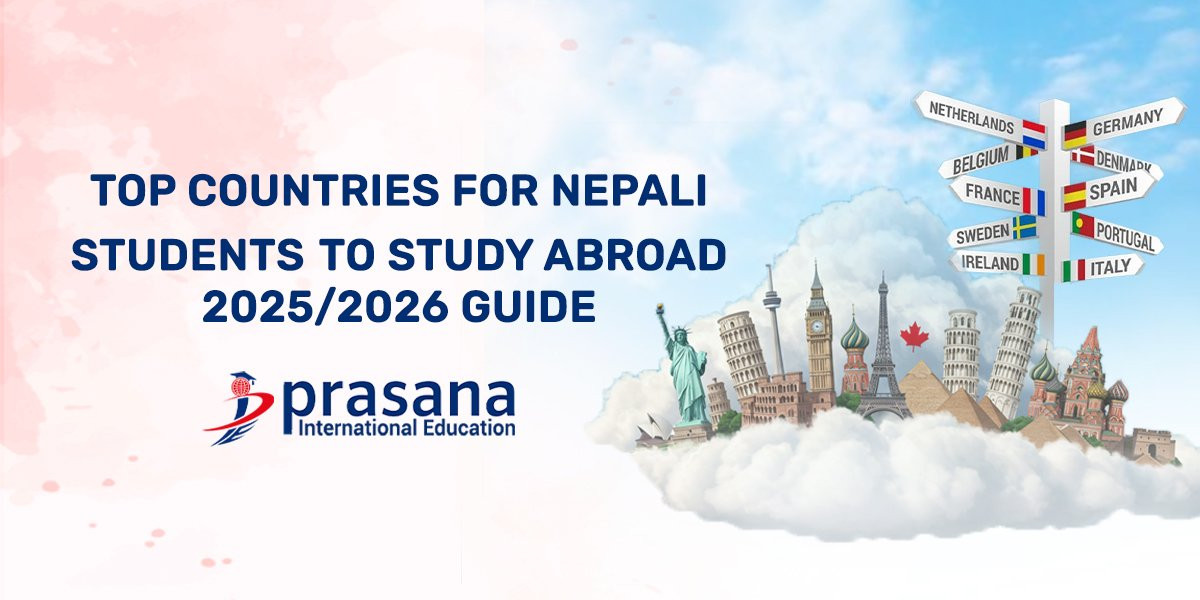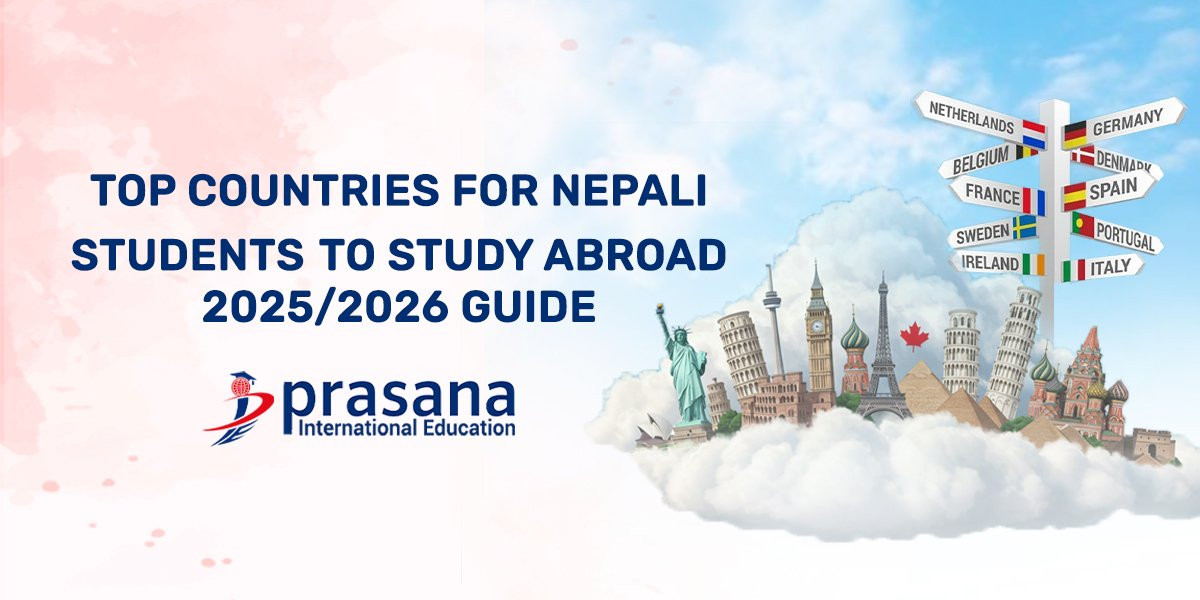


Overseas study is a once-in-a-lifetime opportunity to provide quality education, global exposure at global levels, better career prospects, and enriched individual lives. Choice of country is a make-or-break position for Nepalese students seeking foreign study opportunities for 2025 and 2026. It is dependent upon balancing criteria like education quality, cost, language, visa policy, post-study work, and comparable culture.
This entire guide lists the top countries Nepali students are choosing to pursue their education in 2025 and 2026, the top advantages, the most popular courses, the visa process, and job opportunities.
Australia is always the first choice of the nation for Nepali students due to its most advanced education system, multicultural society, and huge job opportunities.
- Get enrolled with Confirmation of Enrollment (CoE).
- Provide sufficient funds (approximately AUD 44,500 per year for living expenses and fees).
- Pass English language proficiency (typically IELTS 5.5-6.5).
- Provide a Genuine Temporary Entrant (GTE) statement to be considered for a visa interview.
- Australia accepts multiculturalism accompanied by career advancement for students looking for hands-on experience with excellent post-study prospects, as well as global career prospects.
Canada is fast becoming the preferred destination of a Nepali student because of its affordable education, low living expenses, and immigration policy.
Application procedure necessitates admission proof, financial ability, medical examination, and English (TOEFL or IELTS). They are also provided with scholarships, and the career opportunities are also quite good for technology and health students.
Canada is followed by students who are interested in long-term professional exposure and post-graduation emigration.
The UK is also a leading destination for visits among Nepali students attracted by its top-ranked universities and booming culture.
- The students are asked to provide tuition fees and living expenses, English language proficiency, and visa interview preparation.
- The UK provides global experience, study diversification, and post-study work opportunities.
- Changing immigration trends, strong scholarship schemes, and festivals also render the UK affordable for Nepali students.
The US is another choice with its humongous educational campuses and innovation.
Living in the United States will be expensive. Scheduling visa interviews will be challenging; nationality relationships by country of origin must be made by students. Fee can, however, be settled through assistantships and scholarships.
The US is appropriate for career students, research students, and study abroad students.
Germany is getting more and more popular among Nepali students due to its no-fee or low-fee regime and great engineering and technology programs.
The student needs to give proof of acceptability, resources, and language ability (German or English). At least German is enough for work and an internship.
Germany is drawing students with quality without the taint of too much cost.
New Zealand is also much in demand, especially for bachelor's and diploma courses, because of its natural beauty and hospitality.
Health clearance, financial statements, proficiency in English speaking, and an admission letter. New Zealand is the best place for Nepali students to enjoy a serene study life with prosperous career prospects on graduation.
Japan and South Korea have been the most preferred among Nepali students for decades, considering proximity, scholarship, and advanced technology-based education.
Languages and cultures have to be accommodated, or the countries are suitable for technology- and culture-sensitive students.
When designing a plan of where and how to study abroad, Nepali students need to take into account:
Survival abroad is no longer a function of the destination country. Students require:
- To adequately prepare for visa interviews.
- To have available letters of recommendation and transcripts.
- To undergo clean language tests like IELTS or TOEFL.
- Plan the writing of funds, i.e., tuition fee, insurance, and living expenses.
- Research colleges in advance and apply in advance.
- Establish contacts through the students' association and cultural organizations.
For Nepalese students to study further outside the country in 2025 and 2026, the website is functional. Australia, the US, the UK, and Canada are still the safest bets for high-quality education and career opportunities following studies of quality. Europe and Germany have affordable but growing opportunities. New Zealand is security- and nature-based, and Japan and South Korea are the most sought-after for studying technology courses and geography.
The choice of a proper nation is determined according to career aspirations, economy, language, and lifestyle. Following the right planning, Nepali students are able to acquire foreign access and achieve successful careers through foreign study plans.
Information on the country, visa, and scholarship, if needed, can be researched as the second step, or you can consult with Prasana International Education Consultancy in order to make a seamless and fruitful experience abroad for study.
Nepali students also normally need an admission letter from a legitimate university, proof that they possess sufficient funds to pay tuition fees and living expenses, proficiency in English (e.g., IELTS or TOEFL), and medical and character certificates. Visa requirements and provisions also differ from country to country, and students can therefore visit official government websites or visit education consultants to receive accurate and up-to-date information.
Processing time may be unconsolidated, but it is normally 4 to 8 weeks. Australian student visa will be 4 to 6 weeks, for instance, while the UK and Canada are slightly longer, depending on the number of their cases and holiday rush. Pre-submission advice can be made earlier with full documents before deadlines in a bid to prevent such delays.
Yes, all the top nations to pursue study, i.e., Australia, Canada, the UK, and New Zealand, permit international students to work part-time, usually 20-40 hours a week during term time. It gives the students a chance to contribute to some of their living expenses and also gain experience. Visa regulations have to be adhered to very strictly, since the terms and conditions to enjoy work benefits differ depending on the country.